BRIAN GREGG 'In The Snug' with Bulls Head Bob
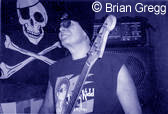
"Hi Bob... Hello Brian. Doris! ... two warm brown and milds if you please... and don't forget to drop some fag ash on the froth. I've got a guest" (It's always important to create the right atmosphere).
THE RECORDING OF SHAKIN' ALL OVER
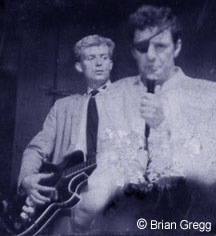
"It's a classic mate", a phrase grossly overused in our media. There were more classic rock songs written and recorded in the 1960's than at any other time in history - songs that will live forever and a day. Sat opposite me 'In the Snug' today is a man who was part of the three man creative force that wrote and recorded one of them. This song rates at the very highest echelons of classic songs. I'm not going to give comparisons because it stands on its own merit.
Brian Gregg was 'instrumental' in co-writing this song. It has influenced myriad musicians ever since. And if that wasn't enough, the group Brian was a member of at that time has been rightly lauded as the pioneers of Beat Music - that great convergence of rock and roll mixed with the blues, with added raw-sounding guitar and gut-punching bass, played at a frenetic pace to enthusiastic audiences in countless, packed smoky bars and dance halls worldwide. That legendary group was 'JOHNNY KIDD and THE PIRATES'. The song of course, was the immense... SHAKIN' ALL OVER.
Brian was In the Snug with me to chat about the creation of that song, and the actual recording session - so, without further ado, lets go back to London in 1960...
THE NIGHT BEFORE
Johnny Kidd and The Pirates had returned to the West End after playing a gig at Aylesbury Assembly Rooms. Arriving around midnight, they dropped off Clem Cattini then the rest of the band. Alan Caddy, Johnny Kidd and Brian Gregg went to the 'Freight Train' coffee bar in soho. Brian's wife was singing at a club nearby and didn't finish till 2.30 in the morning so Brian had some time to kill before meeting up with her.
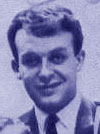
"We were due in the studio at Abbey Road the next day, to start work on our follow-up to 'Please Don't Touch'. EMI had told us that the next single would be 'Yes Sir That's My Baby', a song we had all objected to. It was a trad-jazz classic that had been done to death already and didn't suit the loud and energetic stage show that the band were known for or give us a more modern image". The emerging Beat sound, which was the music of the moment, was the direction Johnny Kidd and The Pirates were going in. "Jazz had had it's day, that had been replaced by rock and roll, but now that too was on the decline and so we saw EMI's choice of song for us as a step backwards".
EMI's response to their objections was that it was up to them to make the song their own! This attitude of EMI's applied to practically all bands of the 60's, that is, you walked into the studio, they told you what song you were going to record and you did it. "Groups had no choice in those days so we had to do the number whether we liked it or not".
Luckily, a week or so before the session, they had been 'canny' enough to ask if they could write the B side, to enable them to enjoy the benefits of songwriting royalties. Although Please Don't Touch hadn't been a big hit, the band were seen as a success so the company gave into them a little more. EMI agreed to their request but would want to hear the song first, before totally committing themselves. "We had no songs of our own to present or record at that time but we got the deal."
"As we were sat waiting at the Freight Train, I said we should use the time to write a song before the session tomorrow. After all, we only had to write a simple rock 'n' roll tune and we three were all experienced in playing that, after years on the road. We had no thoughts of writing anything lasting or technical, just a 'B' side, something that would bring us in some more cash. In 1960 you would be paid the same amount of royalties for writing the 'B' side as you would the 'A' side so we didn't have to try and be clever, just do something acceptable".

"Chas McDevitt, whose place it was, let us go down into the cellar of the coffee bar where we wouldn't disturb any of the punters. It was really just a storeroom. We all kind of looked at each other not knowing where to begin. I said "Look Johnny - I've got a bass run that I like which might be a good start". I didn't have my bass guitar with me so I sang it to him. "It goes DUM-DUM, DUM-DUM, DUM-DUM, DUM-DUM", tapping out the timing at the same time."
Guitar intro's were the new 'must have' thing in rock music and Alan Caddy said; "We should have a guitar riff too". He started playing something that was a bit like the 'Move It' (Cliff and The Shadows) opening - a double string run-down in the key of E starting from the G fret. He messed about a little more with variations and single notes and there it was - 'Diddleadum dum dum dum dum dum' - the bare bones of the 'Shakin' All Over' guitar intro riff."
It has to be said that Alan Caddy had already used a very simple, but dynamically effective, opening riff on Please Don't Touch. This was played on a Futurama Graziola with a VOX AC 15 by the way you guitar guys. "Now, part of Johnny Kidd's stage act was that, during a guitar solo, he would do a wide eyed 'whole body tremble'. Dickie Pride used to do that move and Johnny thought it looked good so we copied it. I think Dickie probably nicked it from someone else too. It's called dynamic tension or - 'shakin' all over". The title was already in their hands and Kidd could picture himself singing the line then going into his shaking routine whilst the just-composed riff or solo was being played. "The words came really quickly, in fact we were all laughing, thinking how amateurish and corny they were because Jerry Lee Lewis had 'Whole Lotta Shakin' a few years before and the old style Rock 'n' Roll terminology was on the way out, so the word Shakin' was quite suspect but we couldn't think of anything to put in it's place".
"The main thing for us was, we didn't want to turn up at Abbey Road to record our song and then spend time scratching our heads not knowing how to play it straight away. We wanted to show them that we were professional and had the right attitude. They would have made us record something else if they weren't happy and we would then have no writing royalties". Having decided that they had at least, the makings of a 'B' side song in the bag, they went home.
What Brian didn't mention was that, during those times it was quite normal to go into a studio and be told by the producer that you have 30 minutes to record the A side and 10 minutes for the B side so it was important to try and nail their song on the first take, which then gave you a couple of minutes to do something extra.
RECORDING DAY - ABBEY ROAD STUDIOS
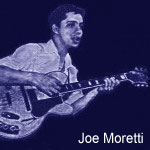
The next day, at 10 o'clock in the morning, Johnny Kidd and The Pirates arrived at Abbey Road. "We couldn't go straight into Studio 2 because they were running late, so we were put into the canteen to wait for 45 minutes. The assistant producer, Pete Sullivan told us that they were going to supply an additional session guitarist to augment the backing sound. We didn't like the idea too much but you have to bear in mind that, in those days, we were recording onto two-track tape and didn't have the luxury of double tracking or recording an additional rhythm track".
"Recording techniques and microphones were very basic so consequently, the engineer would not let guitarists play loud. As a result, the recorded sound wasn't very thick like it normally was on-stage, where you could play with some volume. This applied particularly to us as we were a three piece instrument line up. We were a bit nervous that they would give us a 'Bert Weedon-ish' guitarist whose style wasn't really rock, so Alan Caddy left the studio to go and find our friend Joe Moretti to help out. We all knew Joe from the 2i's and knew he would definitely be glad of the session fee of seven quid. Besides, he was a good player. The extra wait in the canteen gave us a little more time to practice and improve the song with Joe present".
THE PIRATES SOUND
At this point, I took the opportunity to talk with Brian about The Pirates sound. I can't think of any other group who were more gutsy or hardhitting particularly for 1959/60 when most other groups were tippy-toeing around doing The Shadows steps. I have always been impressed that for those days, they got such a good bottom-end sound on Shakin All Over. "It was all down to Pete Sullivan really. He was the first person ever to 'mic up' the drums individually. He got Clem to remove the front skin from his bass drum then placed a cushion inside it with a mic resting on top. He would record the kit with only a little volume, through the desk to avoid over-peaking distortion, and then turn up the recorded sound when doing the mixing. It was such a tight bass drum sound".
That great percussive sound wasn't all down to Pete Sullivan's prowess at recording or just the brilliant drumming of Clem Cattini. Brian Gregg had an approach to bass playing that wasn't really shared in the music community at the time. "It was thought that the bass was the instrument you only 'missed hearing' if it stopped playing. Well I had other ideas about that and made it an instrument with a purpose - to give it its own place. Also, I played with my thumb, which gave a much deeper resonance than using a plectrum. This worked perfectly playing very closely with the drummer in a three piece music set up to create some 'guts' ".
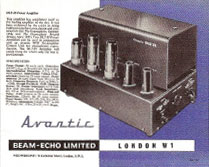
I was interested in the kit Brian had used for the session, suspecting that for 1960 it would be the usual limited wattage Selmer or 15 watt VOX amp. "I played a Framus Star Bass with an AVANTIC amplifier. It was styled like the Linear Conchord cage amp" (Avantic was a small audio workshop in West Hampstead that made high-end audio equipment and also the amplifiers for BAL AMI Juke Boxes. Unbelievably for 1959 when Brian bought it, it was rated at 100 watts!!). He also had a bass cabinet professionally made by their acoustics specialist and fitted with an 18" speaker - a real rarity. Later on Brian was given a VOX AC 30 bass amp that would be put on the backline for TV recordings but he continued to use his trusty kit for live work.
As for the rest of the line-up on that session, Alan Caddy played a home-built Stratocaster look-alike (manufactured by Johnny "Fruit" Gordon) and plugged into a VOX AC15 guitar amplifier. Joe Moretti used a Grimshaw 22 guitar but his amp is not remembered. Clem Cattini played a set of Trixon drums.
MEANWHILE BACK AT ABBEY ROAD... Before the recording session got under way, they climbed the stairs into the control room where, with the aid of an acoustic guitar they played Shakin' All Over for the producer Wally Ridley and his Assistant, Pete Sullivan. "We played it and they nodded agreement that it was OK for a B side, so the practice had helped". There was however, one technical problem - the song was a few seconds too short. "Songs in those days had to have a set minimum length, otherwise, when the record was played on a Juke Box, the mechanical arm assembly would lift prematurely or would carry on travelling across the record surface playing nothing but hisses and crackles". Clem Cattini suggested that he place a drum-fill in between the end of the chorus and the beginning of the guitar solo to give the required amount of extra time. Two bars would be the ticket.
THE GREAT 'GUITAR RIFF' DEBATE - FROM THE HORSE'S MOUTH
Now, if you listen to Please Don't Touch it is obvious that Alan Caddy was an exciting guitarist. This was recorded in 1959! Turn up the volume on the recording and just listen to his energetic performance on that song. It is easy to imagine him playing like that 'live' with some volume. It's really in the foreground and explodes when added to Brian Gregg's forceful bass, perfectly tied into Clem Cattini's bass drum. These two were a real tour-de-force as the rythm section to emulate. They were unparralelled at the time - just so solid, functional, and mean!! Even now, I can't imagine how good it would feel to play with those two on the top of their game.
It has always puzzled me that so much has been talked about of Joe Moretti being the 'super session guitarist' who had effectively 'made' the song with his guitar skills. For years, and even today, credit for the Shakin' All Over riff was given to either Joe or even more bizarrely the 'later line up' guitarist Mick Green, despite being Alan Caddy's. It was a great opportunity to clear up once and for all who did what? I said I was sure that Alan could have easily done the lead guitar duties anyway! Brian agreed emphatically and said:
"Alan Caddy was a brilliant guitarist, he could play anything. Alan however, was also the sort of guy who would be happy to stand back and let someone else take the glory if it meant the song would sound the better for it. He rated Joe's playing style and suggested that he take the lead guitar part in total, rather than record the two guitarists playing different parts of the lead. "Alan showed Joe the intro riff and then for the recording, played the bass line along with me, but two octaves higher" Joe Moretti contributed his own guitar solo which was great of course but the now-famous intro riff itself was Alan Caddy's - not Moretti's as people would believe".
"Joe has been talked of as the session guitarist who made Shakin' All Over famous - that's wrong!! Joe was a good guitarist who was a mate and happened, by the good grace of Alan Caddy, to play on the record. He wasn't a session guitarist at the time - he was a guitarist who I'd personally invited down to London because I'd seen him play in Scotland and recognised that he could make a living as a good rock guitarist. He got the job because he could do with a bit of paid work - it could have easily been any other guitarist. His solo on Shakin' All Over gave Joe a break into the session music world. But Shakin' All Over would have been a great success without that particular solo anyway. It wasn't his performance that 'made' Shakin' All Over, it was an element".
Alan Caddy's stage persona and musical style with The Pirates has been copied by many guitarists, not least by Pete Townshend. "The windmilling arm was one of Alan's moves". Musically speaking, to cope with the fact that the Pirates had no rythmn guitarist Alan developed a musical style of playing the rythmn whilst simultaneously playing lead parts. This style of playing was always associated with The Pirates later guitarist, Mick Green but in fact he had simply carried on with the Style that Alan had pioneered so effectively.
LATER, ON THE STUDIO FLOOR...
"We counted in and the track was completed in one take. We then had time for an overdub for the guitar 'shimmer' part, achieved by utilising Brian's cigarette lighter on the strings at the 12th fret position like a slide guitar. So that was 6 minutes taken up in the recording process. It took longer than that just to set up the equipment".
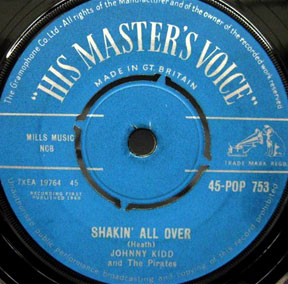
"We were sat in the control room listening to the playback when I noticed that, from the beginning of the drum fill till the end of the guitar solo was 14 bars, not the usual 12. I said that we should have done a one bar drum fill followed by 11 bars of guitar solo because, technically speaking it was not a 'complete' song (in the accepted format) in it's current state. Whilst everyone agreed, it was decided that it was a nice 'quirk' and it was left unaltered - one of those great moments that just happen on the spot". Clem Cattini's drum fill of course was just uniquely perfect.
"So anyway, that was the session completed and we left that afternoon for a gig somewhere. We didn't have great expectations for Yes Sir That's My Baby being a chart success but we would be getting writing royalties for the other side so we had something to look forward to financially"
A few days passed. "I got a phone call from Johnny and he sounded slightly puzzled but excited. He said EMI have just called me. You know that 'Shakin' track - well they like it!" Behind the scenes, Jack Good, Britain's premier rock TV producer had been given a copy of The Pirate's new single for a TV slot consideration. He disliked it but LOVED the B side. "He had done the same thing previously when he'd heard Cliff Richard singing 'Move It' - itself the the B side of his record release".
"Jack Good had enough clout to make the 'suits' change their minds because record and sheet music sales normally soared when Good featured tracks he liked on his current Saturday evening TV show 'WHAM'. EMI rapidly switched the sides. "We got booked onto his show, played Shakin' All Over and our whole world seemed to go berserk! It was a massive success that happily, surprised us all, climbing to No 1 in the record charts".
Maybe because of the rapidity of events surrounding the switching of the 'A' side, Johnny Kidd (Fred Heath) was solely credited with writing the song. "Although Johnny's name is the only one there, he made sure the royalties were shared by us as co-writers".
For anyone who doubts or gets the idea that, because it only says 'Heath' on the label, that Alan Caddy or Brian Gregg did not co-write Shakin' All Over, they should be given a good 'shaking' themselves. Their musical presence and identity is as obvious and clear as a fingerprint on a glass. It would be like saying that the bass part on 'Walk On The Wild Side', 'Under Pressure' or 'Alright Now' was 'just a simple bass part'. It is as much a 'hook' as the songs' title or the outstanding, simple but devastating guitar riff that is Alan Caddy's. I doubt if there's a red blooded guitarist alive who hasn't played both of those stylish and raw parts and not felt exhilarated. Joe Moretti's solo is just as important too. It is one of those solo's that other guitarists learn note for note.
For my part, I have been able to enjoy playing probably the best rock song of a generation for years. I like to change my own musical direction every now and again but find myself drawn back to this simply incredible song. Musically and lyrically there is nothing 'technically' special about any of it. I didn't ask Brian to comment on that but guess that he would agree with that summation in an instant, he's a great musician. However, to dissect it too much would be to do it an injustice. In reality and by necessity, this song was conceived, put together, rehearsed AND recorded in the timespace of a couple of hours.
What it did do, was to capture the freshness, rawness and energy of 'the moment of creativity' so often lost by over thinking and rehearsal. It captured the attention of the youth of the country where it was born, propelling them forward on the crest of a revolutionary wave of modern music and social change. It's suggestive, sexually charged content was complimented by outstanding live performances from one of the very best groups ever put together on the whole of the planet. Out on the circuit of clubs and dance halls across the UK, the heavy pounding rythmn of The Pirates with Johnny Kidd belting out Shakin' All Over at the helm, was tearing up the place.
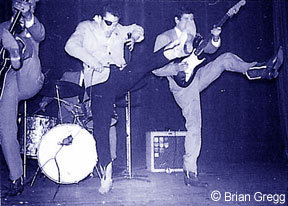
Brian Gregg's musical credentials are so much more than just being The Pirates' bass player but, even if that were the case, that in itself would be something that would place him in high esteem in my book. Brian is a person who is as important as ANY of the best known musicians we all know and applaud as giants of the 60's - make no mistake. Should I get asked for the top five bands of all time, Johnny Kidd and The Pirates would be guaranteed to be there. Long may they live.
We chatted on for quite a while, old muso's war stories... "Remember him?... Remember that gig in Nelson? Crap agents and even Nicky James came up as someone we both knew. He was great company and we parted saying we'd meet up again soon. I shall look forward to that. I could just picture myself playing that opening riff and looking to my right would be Clem Cattini and the pounding bass of the great Brian Gregg!
Bulls Head Bob
Copyright © Bulls Head Bob
Visit Bulls Head Bob's blog at www.bullsheadbob.blogspot.com